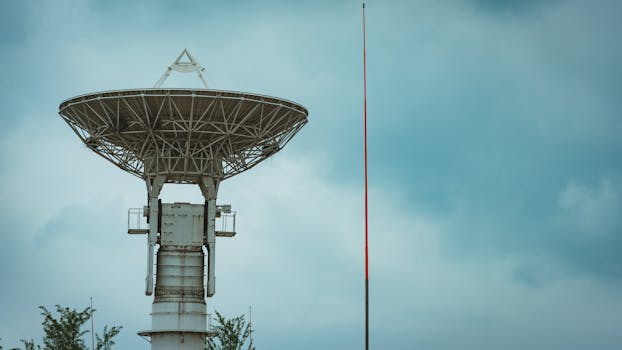The Future of Satellites: Revolutionizing Global Connectivity
The future of satellites is poised to revolutionize global connectivity, enabling faster and more reliable communication networks. With advancements in space technology, satellites are becoming increasingly important for various industries, including telecommunications, navigation, and weather forecasting.

The Future of Satellites: Revolutionizing Global Connectivity
The future of satellites is poised to revolutionize global connectivity, enabling faster and more reliable communication networks. With advancements in space technology, satellites are becoming increasingly important for various industries, including telecommunications, navigation, and weather forecasting. The focus keyword Future of Satellites is an exciting topic that has garnered significant attention in recent years, and for good reason. In this article, we will delve into the world of satellites and explore their potential to transform the way we communicate and access information.
Satellites have been a crucial part of modern communication systems for decades, providing a means to transmit data, voice, and video signals over long distances. However, the traditional satellite model is facing significant challenges, including high launch costs, limited bandwidth, and signal latency. To address these challenges, the satellite industry is undergoing a significant transformation, driven by advancements in technology and innovative business models.
Advances in Satellite Technology
One of the key drivers of the satellite industry’s transformation is the development of new technologies, such as small satellites and constellations. Small satellites, also known as smallsats, are significantly cheaper to launch and operate than traditional satellites, making them an attractive option for many applications. Constellations, on the other hand, refer to networks of satellites that work together to provide global coverage and high-bandwidth connectivity.
Another area of significant innovation is in the development of reusable launch vehicles, which are capable of launching satellites into orbit and returning to Earth, thereby reducing the cost of access to space. Companies like SpaceX and Blue Origin are at the forefront of this technology, with their reusable launch vehicles having already demonstrated significant cost savings and increased launch frequency.
Applications of Satellites
Satellites have a wide range of applications, including telecommunications, navigation, weather forecasting, and Earth observation. In telecommunications, satellites provide a means to extend network coverage to remote and underserved areas, enabling access to critical services like healthcare, education, and financial inclusion.
In navigation, satellites enable precise location determination and timing, which is critical for many industries, including aviation, maritime, and transportation. Weather forecasting relies heavily on satellites, which provide critical data on atmospheric conditions, ocean currents, and other environmental factors.
Challenges and Opportunities
Despite the many advances in satellite technology, there are still significant challenges to be addressed. One of the major challenges is the issue of space debris, which poses a significant risk to operational satellites and the environment. Another challenge is the need for regulatory frameworks that can keep pace with the rapid evolution of the satellite industry.
However, these challenges also present opportunities for innovation and growth. For example, the development of debris removal technologies and sustainable satellite design can help mitigate the risks associated with space debris. Similarly, the development of new regulatory frameworks can help create a more favorable business environment for satellite operators and manufacturers.
In conclusion, the future of satellites is exciting and full of promise. With advancements in technology and innovative business models, satellites are poised to play an increasingly important role in enabling global connectivity and access to information. As the satellite industry continues to evolve, it is likely that we will see significant advancements in areas like small satellites, constellations, and reusable launch vehicles.



